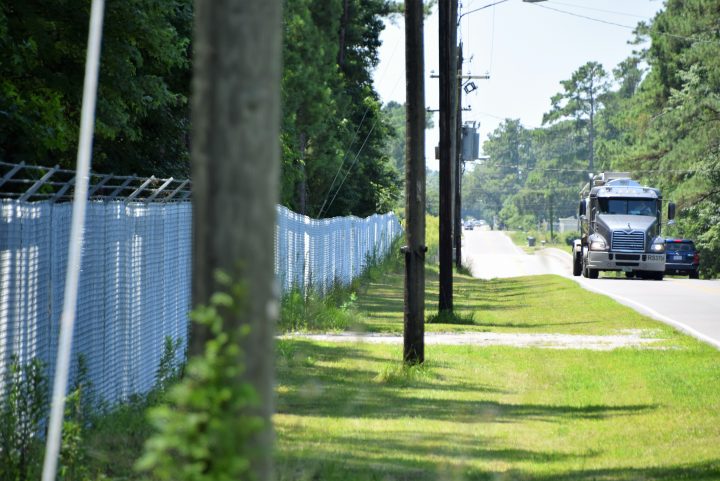
NAVASSA – The U.S. Environmental Protection Agency has determined that part of the former site of a wood-treatment facility here does not pose a risk to human health or the environment.
How that land will be used became a contentious discussion at a recent meeting, where Navassa residents questioned why the EPA’s proposed plan for the land excludes residential use.
Supporter Spotlight
The agency’s land use proposal for 21.6 acres of the former Kerr-McGee Chemical Corp. site identifies commercial, industrial or recreational uses as future possibilities for development.
Residents who participated in a series of community meetings to talk about potential uses for the chunk of land within the federal Superfund site did not indicate during those meetings that they wanted residential lots on the property, said Erik Spalvins, the EPA’s remedial project manager for the site.

“It was because of the feedback we got from the local government and the community that we should consider industrial/commercial and not residential,” he said at the Oct. 15 meeting. “I personally have had conversations with many people in this room and I was assured that residential use was not a priority and if that has changed, that’s OK. If that has changed, then we need to know that.”
But some residents said they believe the option to use the land for housing was never really on the table during a series of community charrettes held to discuss future possibilities for the land.
Brunswick Housing Opportunities President Resea Willis said she believed residential use was not a possible option for the land because, during discussions last year, government officials said some contaminated soil would have to be removed from that portion of the property.
Supporter Spotlight
“I never heard residential in that use,” she said. “When we did the charrettes, we knew we could not do residential in that unit until it was cleaned up.”
Spalvins explained that the EPA originally thought the land, identified as “operable unit 1,” would be about 30 acres. The size of the unit was scaled down after testing revealed that contaminants exceeding the national standard were on a portion of the property.
Chris Graham, a Navassa resident and member of the Navassa Community Environmental and Economic Redevelopment Corp., or NCEERC, said he attended the charrettes and did not recall being informed that residential use was an option up for discussion.
“Is there any documentation of where you got that information?” he asked Spalvins. “How did you get that impression? I believe people were steered in that direction to kind of ignore the residential side.”
EPA Community Involvement Coordinator L’Tonya Spencer said that during those meetings between members of the community and government officials poster boards displayed in the room did not include residential use.

“That’s why I made my comment about being steered toward industrial,” Graham said. “We were focused on the industrial part during those charrettes.”
Spalvins responded that if people’s minds have changed, “that is OK.”
“Let us know that,” he said. “Things have evolved. If people want to see a different type of use then we need to document that as clearly as we can. Up until about an hour ago I had not been aware there was interest in residential use as part of the site.”
The wood-treatment plant was operated under various companies between 1936 and 1974, where creosote, a gummy, tar-like substance, was used to treat and preserve logs.
The property was added to the National Priorities List of federal Superfund sites in 2010 because creosote contamination was discovered in the groundwater, soil and sediment.
Dozens of wells are being monitored on the property to test groundwater samples. A plume of creosote in the groundwater remains in the same area since the plant closed more than 40 years ago.
The EPA, in consultation with the state Department of Environmental Quality, oversees the Multistate Environmental Response Trust, which a court appointed to own the Superfund site and take responsibility for managing the remediation of the property.
Another trust, the Navassa Trustee Council, is responsible for restoring natural resources in the area around the site damaged by contamination. The trustee council includes DEQ and other stakeholders from two federal government agencies.
DEQ has asked the trust to put restrictions on 2.6 acres of operable unit 1.
Dave Mattison, a DEQ project manager, said an evaluation of soil samples within that portion of operable unit 1 show concentrated areas of contaminants that exceed the state threshold.
For that reason, he said, the state has asked that institutional controls be placed on the 2.6 acres, restricting housing, schools or daycares from being built on that part of the property.
Operable unit 1 is adjacent to 82 acres known as the eastern upland area, which is free of contamination and not part of the Superfund site.
The EPA will break down the remainder of the former facility and the southern marsh – about 80 acres – into additional operable units.
A 30-day public comment period, which was originally to end Nov. 8, on the EPA’s proposed plan for part of the site has been extended to Dec. 8. The extension had been requested in writing and was not a result of what transpired during the meeting.
Submit comments
- Direct comments or questions to: Remedial Project Manager Erik Spalvins at spalvins.erik@epa.gov, 404-562-8938; or to Community Involvement Coordinator L’Tonya Spencer at spencer.latonya@epa.gov, or at 800-435-9234.







